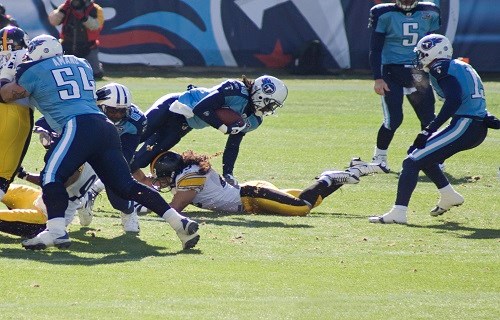Understanding the link between brain desease and American football
Researchers from Boston University have recently investigated the relationship between American football players and cases of the degenerative brain disease, Chronic Traumatic Encephalopathy (CTE). In a study of 202 football players whose brains were donated for research, a high proportion had evidence of CTE, suggesting that CTE may be related to prior participation in football.
The disease can be found in individuals who have been exposed to repeated blows to the head. Consequently, CTE can lead to a series of symptoms such as; anxiety, aggression, memory loss, depression, confusion and suicidal behaviour.
The study identified the disease in 99% of the brains from deceased National Football League (NFL) players. It was also found in 48 out of 54 former college players and in three out of 14 former high school players.
“There is no question that there is a problem in football. That people who play football are at risk for this disease. And we urgently need to find answers for not just football players, but veterans and other individuals exposed to head trauma,” Dr. Ann McKee, director of Boston University’s CTE Center, told CNN earlier this year.
The CTE study from Boston places itself in the midst of a long-time debate concerning the potential health risks facing NFL players. For years, the NFL avoided saying whether football was related to CTE and set aside the medical findings on the matter. Last year, however, the NFL acknowledged for the first time, a connection between CTE and football.
Commenting on the findings by the researchers from Boston University, the NFL told CNN that:
“The medical and scientific communities will benefit from this publication and the NFL will continue to work with a wide range of experts to improve the health of current and former NFL athletes.”
“The NFL is committed to supporting scientific research into CTE and advancing progress in the prevention and treatment of head injuries,” added the NFL in its statement on the study.
According to the CNN, the NFL pledged an additional US$100 million in support for engineering advancements and independent medical research last year.
The NFL can learn from other leagues and improve player health
While NFL’s policies concerning player health are fairly comprehensive, there are several ways in which the league can further improve the health of its players, concludes a report by researchers from Harvard University. In the report researchers compared, for instance, the number of concussions suffered by players across different sports leagues (i.e. the NBA, NHL, MLB and UEFA).
Results revealed that the number of injuries suffered per game in the NFL is approximately 3.4 times higher than the injury rates of MLB, the NBA, NHL, and UEFA combined. Moreover, an NFL player is approximately 3.8 times more likely to suffer a concussion in a regular season game as compared to an NHL player.
When a player is injured in the NFL, he is put on the long-term Injured Reserve List – making him ineligible to play that season. However, there are important implications in determining whether the player’s injury is more severe and requires the player to be placed on the Injured Reserve List, or whether the player’s injury is short-term and the club only has to declare him inactive for a game or two.
The difference between the short-term Inactive List and the long-term Injured Reserve List is even more important concerning concussions because they present uncertain recovery times, and are challenging to diagnose and treat.
As a result of these concussion-specific concerns, the Harvard researchers recommend that the NFL adopt a concussion-specific injured list separate from the short-term and long-term injured lists until he is cleared to play by the NFL’s Protocols Regarding Diagnosis and Management of Concussions.
More information:
- The Clinicopathological Evaluation of Chronic Traumatic Encephalopathy in Players of American Football. A study by researchers from the University of Boston.
- Comparing Health-Related Policies & Practices in Sports: The NFL and Other Professional Leagues. An independent report by researchers from Harvard University.
- A Play the Game essay by Roger Pielke Jr., concerning the growing awareness of health risks in American football and how it can have caused a “notable decline” in football participation among American high school boys.






